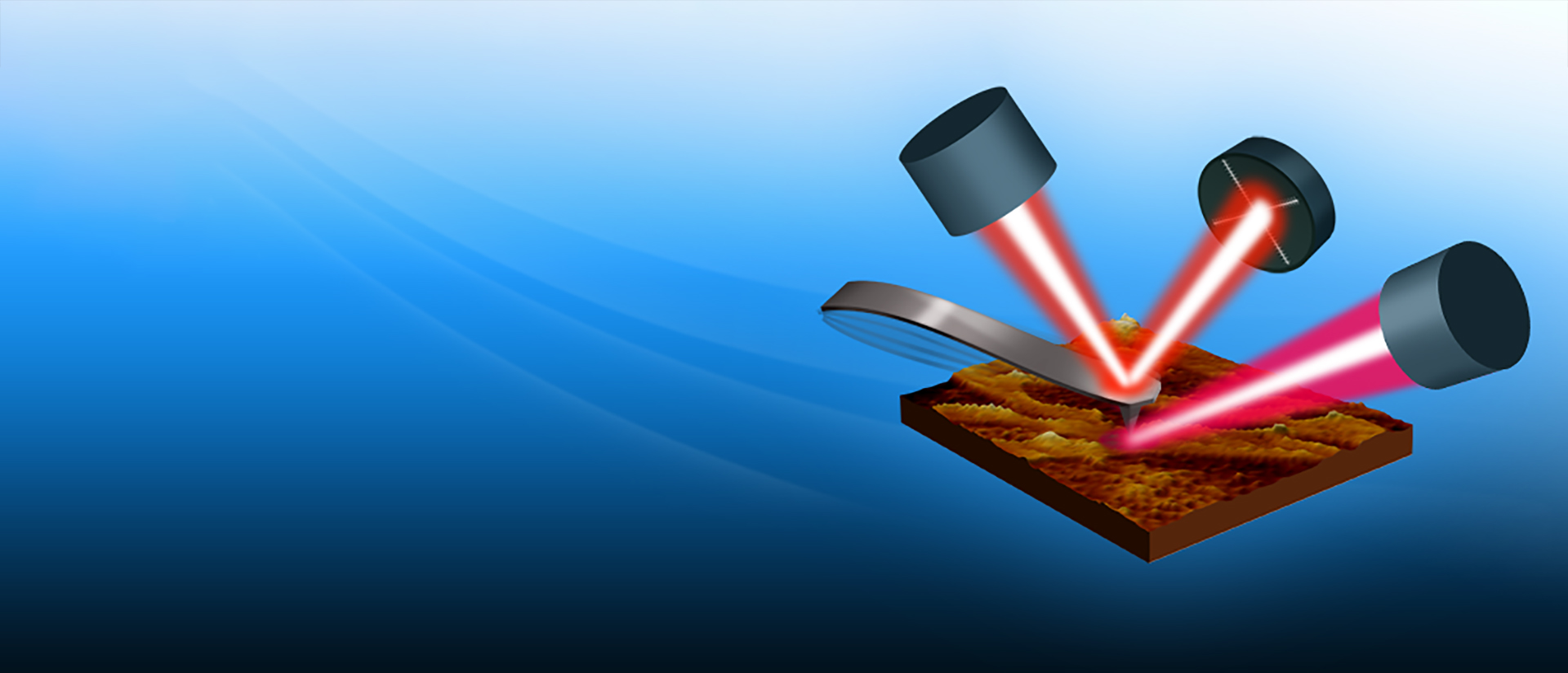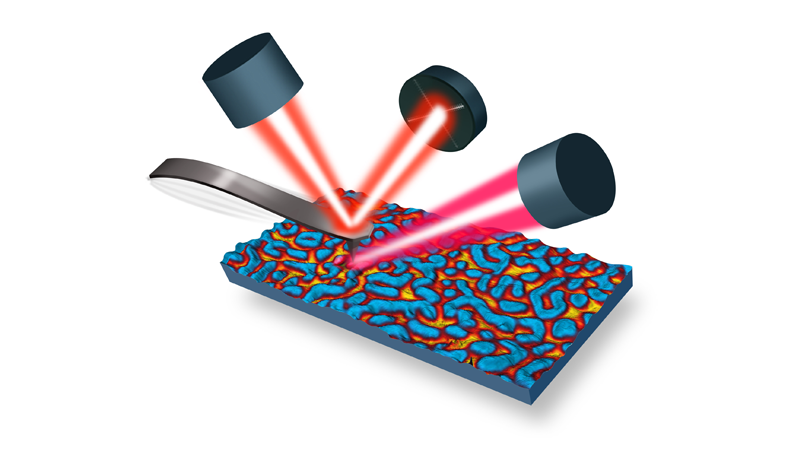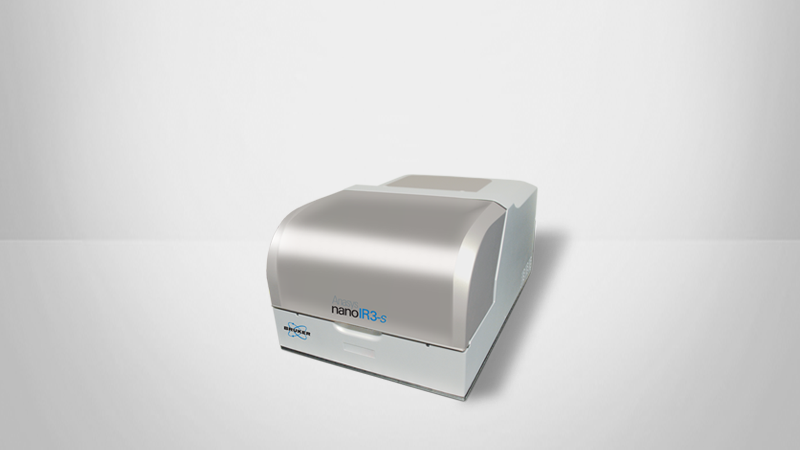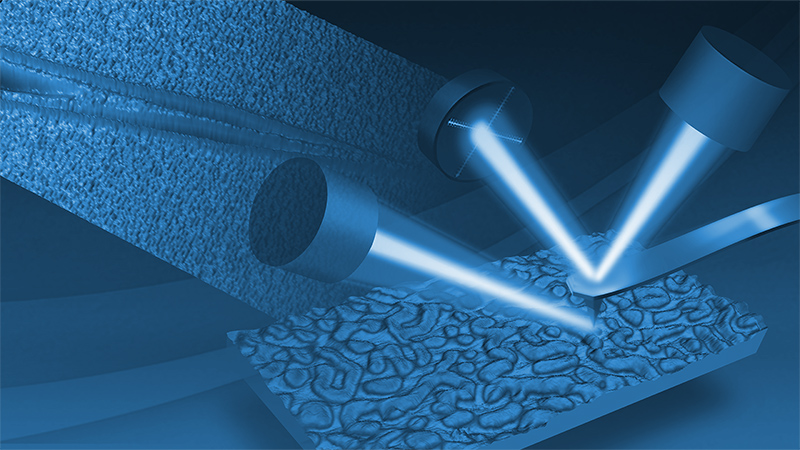

Live Demonstration of the Photothermal AFM-IR Workflow
Follow along with this step-by-step demonstration of the AFM-IR process for obtaining chemical information at the nanoscale
In this real-time demo of the photothermal AFM-IR process, a typical polymer blend is analyzed using the nanoIR3-s system. All segments of the experiment are demonstrated, from setup through data collection and interpretation.
See photothermal AFM-IR in action
During this webinar, our experts conduct AFM-IR analysis of PMMA beads embedded in an epoxy resin, while showing and explaining each step along the way. Viewers can expect to:
- Learn about the acquisition setup procedure, including focusing, parameter adjustment, alignment, and background collection
- Witness in real time the collection of spectra, maps, and hyperspectral images
- Understand how IR spectral data is interpreted
For viewers who are new to nanoscale IR techniques, prior viewing of the first session in this series is recommended
Webinar Summary
In this webinar, Bruker experts guide the audience through an exemplary AFM-IR workflow, using PMMA beads embedded in an epoxy resin on the nanoIR3-s instrument. Whether you are a current or prospective nanoIR3 user or are simply interested in the details of the nanoscale IR spectroscopy process, you can expect to gain practical information from this demonstration.
This demo webinar follows the typical AFM-IR workflow process:
- Measurement setup and proper alignment
- Acquisition of nanoscale IR spectroscopy data
- Mapping of chemical composition at defined wavenumbers
- Hyperspectral imaging to capture a 2D chemical map over a range of wavenumbers
Following the demonstration, the presenters answer questions from the audience, including:
- How long does it take to collect a high-resolution hyperspectral map?
- What are the automation capabilities for a series of chemical images?
- Does the software include spectral processing capabilities?
- Can you measure inorganics alongside organics?
- What are the acquisition differences between dry samples and those in fluid?
- What AFM probe types are used for AFM-IR?
- Can sticky, adhesive samples be measured using the AFM-IR technique?
- watch part 1: Two Complementary Nanoscale IR Techniques: Photothermal AFM-IR and s-SNOM
- watch part 3: Chemical Characterization of Heterogenous Polymeric Materials on the Nanoscale Using Photothermal AFM-IR
- watch part 4: Nanoscale AFM-IR Spectroscopy and Imaging for Failure Analysis of Electronic Devices
- watch part 5: 2D Material Characterization Using Photothermal AFM-IR and s-SNOM
Find out more about the technology featured in this webinar or our other solutions for [topic]:
Find out more about the technology featured in this webinar or our other solutions for Photothermal AFM-IR:
Featured Products and Technology
Speakers
Cassandra Phillips, Ph.D.
Application Scientist, BrukerCassandra did her Ph.D. at the University of Toronto exploring the photophysics of boron nitride nanotubes using scattering scanning nearfield optical microscopy (s-SNOM) and computational models. She has been working at Bruker Nano Surfaces and Metrology since September 2019 as an Applications Scientist focusing on nanoscale IR spectro-microscopy and other correlated imaging techniques realized with atomic force microscopy.
Dr. Anirban Roy
Senior Applications Scientist


